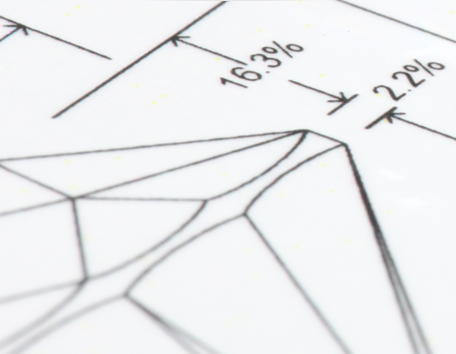
The diamond cut is the factor that fuels a diamond’s fire, sparkle, and brilliance.
The traditional 58 facets in a round brilliant diamond, each precisely cut and defined, are as small as two millimeters in diameter. But without this precision, a diamond wouldn’t be nearly as beautiful. The allure of a particular diamond depends more on cut than anything else.
Though extremely difficult to analyze or quantify, the cut of any diamond has three attributes: brilliance (the total light reflected from a diamond), fire (the dispersion of light into the colors of the spectrum), and scintillation (the pattern of light and dark areas and the flashes of light, or sparkle, when a diamond is moved).
People often think of diamond cut as shape. Round is the shape used in most diamond jewelry. All other shapes are known as fancy shapes. Traditional fancy shapes include the marquise, pear, oval and rectangle. Hearts, triangles and a variety of others are also gaining popularity in diamond jewelry.
As a value factor, though, cut refers to a diamond’s proportions, symmetry and polish. For example, look at a side view of the standard round brilliant. The major components, from top to bottom, are the crown, girdle and pavilion. A round brilliant cut diamond has 57 or 58 facets, the 58th being a tiny flat facet at the bottom of the pavilion that’s known as the culet. The large, flat facet on the top is the table. The proportions of a diamond refer to the relationships between table size, crown angle and pavilion depth. A wide range of proportion combinations are possible, and these ultimately affect the stone’s interaction with light.
Jensen Jewelers is Grand Rapids jeweler for Engagement Rings and Diamonds.



